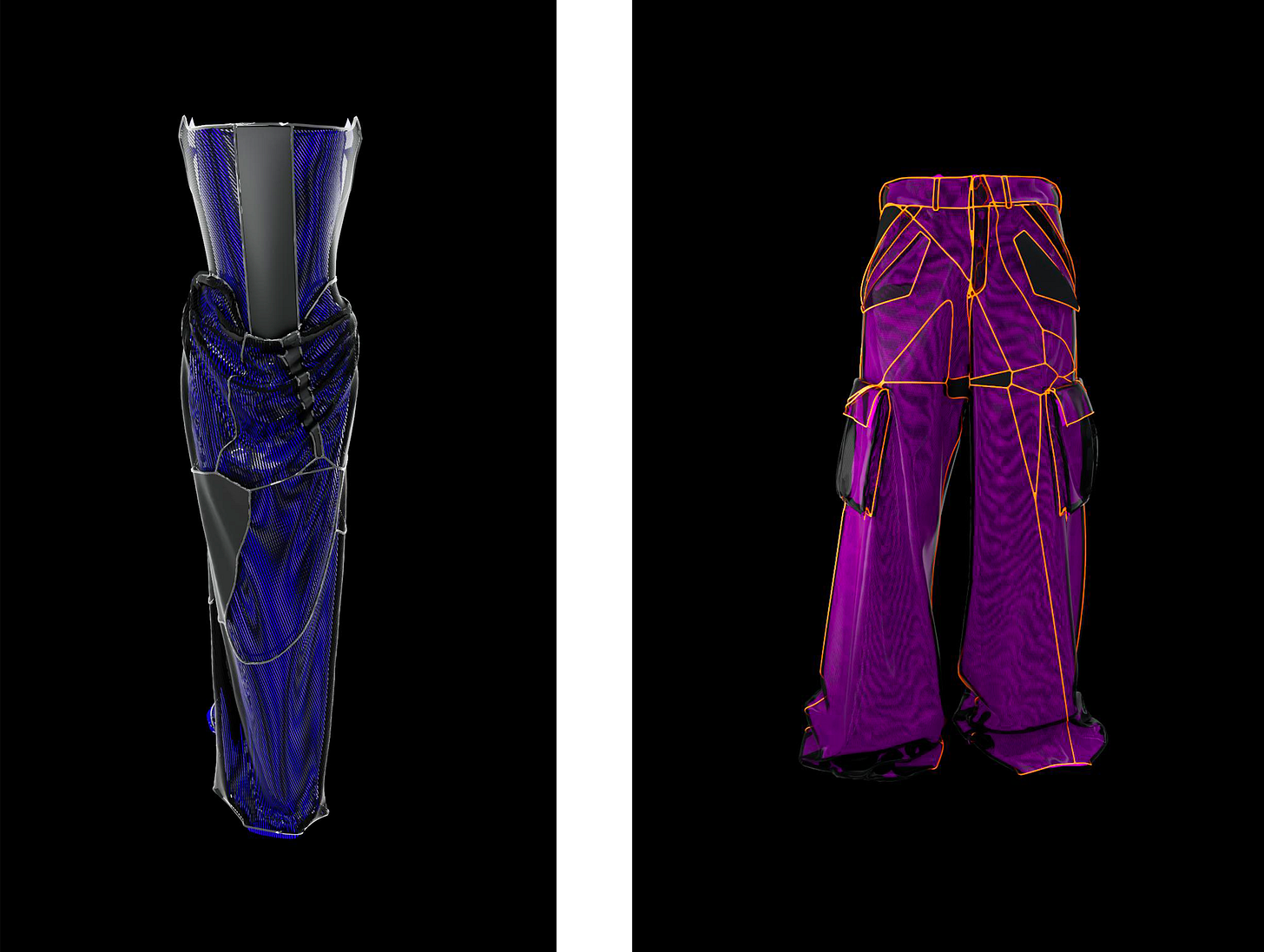Treasure (?) Chests
EYES ON: The World of Fake Digital Luggage
A few weeks ago in a comical twitter thread, @co1born, the founder of the Museum of Crypto Art, presented his latest product, “the first FAKE Louis Vuitton digital collectible.” This release was in response to the widely shared sale of Louis Vuitton’s $41,000 Treasure Trunks (a digital twin that comes with a physical LV trunk).
Not unlike the legal drama that took place a few months ago between MetaBirkins NFT vs. Hermès in which Mason Rothschild, the creator of the digital bags, was banned from selling them, the FAKE LV trunks were swiftly removed from OpenSea.
Digital bags have become the battlefield on which IP wars are taking place. And how strange is that, when in practice there is no need for bags in the digital as we have no belongings to carry around.
WHY WE’RE WATCHING:
The fight over IP — waged by brands against their fakes — is pervasive in physical luggage departments and has now been cleanly translated into the digital. This, at first, seems a little ridiculous.
The power of a fake in the physical world is that it does the job but is without the price tag. Most people can’t tell the difference between a fake bag and a real one, and to many people it doesn’t matter all that much. If it “works”, and can be passed off as the brand’s own, then it’s good enough.
In the digital, bags don’t need to “work.” Instead, the mechanics of the world of luxury are fully revealed and bags are reduced to what they truly are — pure brand affiliation. All the value of a trunk is distilled into one flimsy branded image of a suitcase. In the digital, the designer bag is taken to its furthest conclusion, and functions in a way not dissimilar to carrying around a sign with a logo on it.
The digital luggage-sagas are interesting because they shed light on what we really value about brands in the physical world. In truth, the sagas reveal how simple we all are, how motivated we are by status symbols. And that all of this is no different in the digital world, only that the bags are actually symbols and not real objects.
Unreal Dresses
EYES ON: The Painted Dresses of Vittorio Raggianini (Italian, 1858-1939)
The Italian artists Vittorio Raggianini is best known for his romantic genre paintings depicting wealthy woman of the late 18th century. Entertaining themselves in stately room after stately room, his subjects are young and beautiful and quite notably, dripping in silk.
An age-old symbol of wealth, silk dresses have been popular throughout the history of art, and in particular portraiture, for all that they communicate about their wearers. But, something about Raggianini’s paintings aren’t like others. In his, the dresses wear the women. Somehow, silk becomes the standout subject. And it’s not just any old silk. No physical dress could look like that. These dresses shine with an otherworldly brightness. Their representation exceeds all reality.
WHY WE’RE WATCHING:
Although these paintings might seem quite outdated, with extraneous links to fashion today, they are still very relevant to how we approach representing our clothes.
Like these painted garments, digital fashion is also essentially representations of clothing. Like with these painted garments, with digital clothing we can also go beyond the constraints of physical material and play within entirely new realms of creativity that alternative fashion-mediums provide. Here it’s paint. For us it’s a multitude of digital tools.
That’s all to say, it’s myopic to think that just because we are using new tools we are exploring entirely new territory. We have been dealing with visual representations of clothing for centuries. And Raggianini’s blown-out painted dresses are just a small, shiny example of that.
Beyond Biology
EYES ON: Lucy Hardcastle’s Spora
Lucy Hardcastle’s recent project Spora was made in collaboration with photographer Maisie Cousins. “A mesmerisingly visceral exploration of hidden feminine alchemy”, the projects consists of slow-moving images of close-ups of the female body, detailed with animated CGI elements.
As skin becomes silicon, these bodies mutate from something real to something else. That something, is a new hyper real, hybrid female form. Flesh infused with fantasy.
WHY WE’RE WATCHING:
The project uses the unreal to capture a spirit of the real — the unnatural to communicate the all too natural. Dotted with plastic accessories in fluorescent colours, the female bodies starts to adopt all new characteristics. They move and grow with mystical qualities. Skin becomes wondrous.
To describe their project, the creators use the word “alchemy”, which to us, is a nice way to think about these bodies as they undergo digital tinkering. Alchemy or Medieval chemistry is concerned with the process of near-magical transformation from one substance to another. Historically undertaken as a process to produce precious metals or elixirs to achieve forever-life, in these images, digital alchemy is preformed to produce bodies which exist in a sticky intermediary space between biology and the bizarre.
DRAUP SPOTLIGHT
The COLLECTION #00 garments coming out the minter never cease to surprise us. Each unique, it’s worth keeping an eye on what the generative algorithm produces in every new piece.
A few of our favourite garments recently minted…
The last dress DRESS#150 and a great orange lining on PANTS#151.









